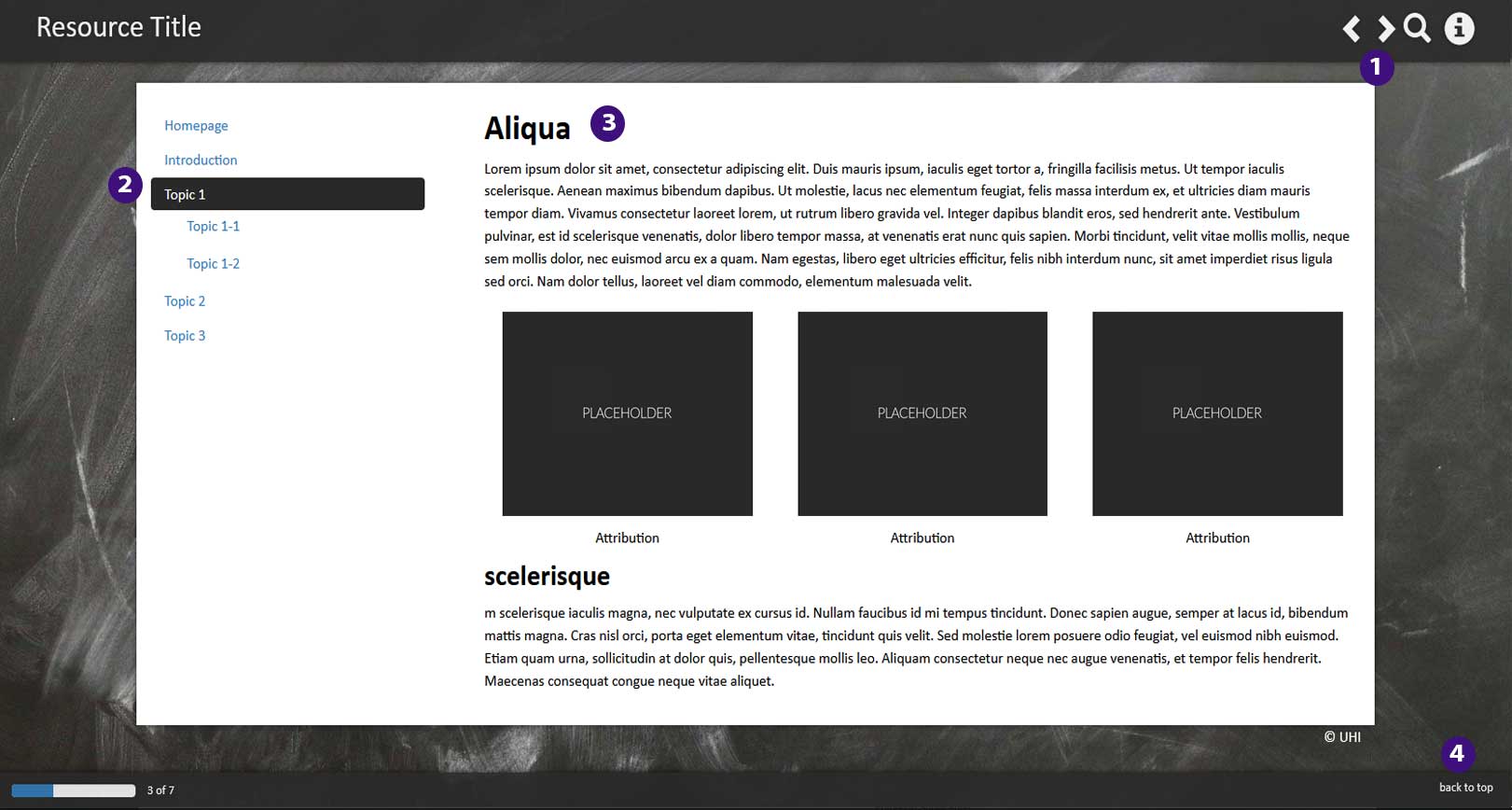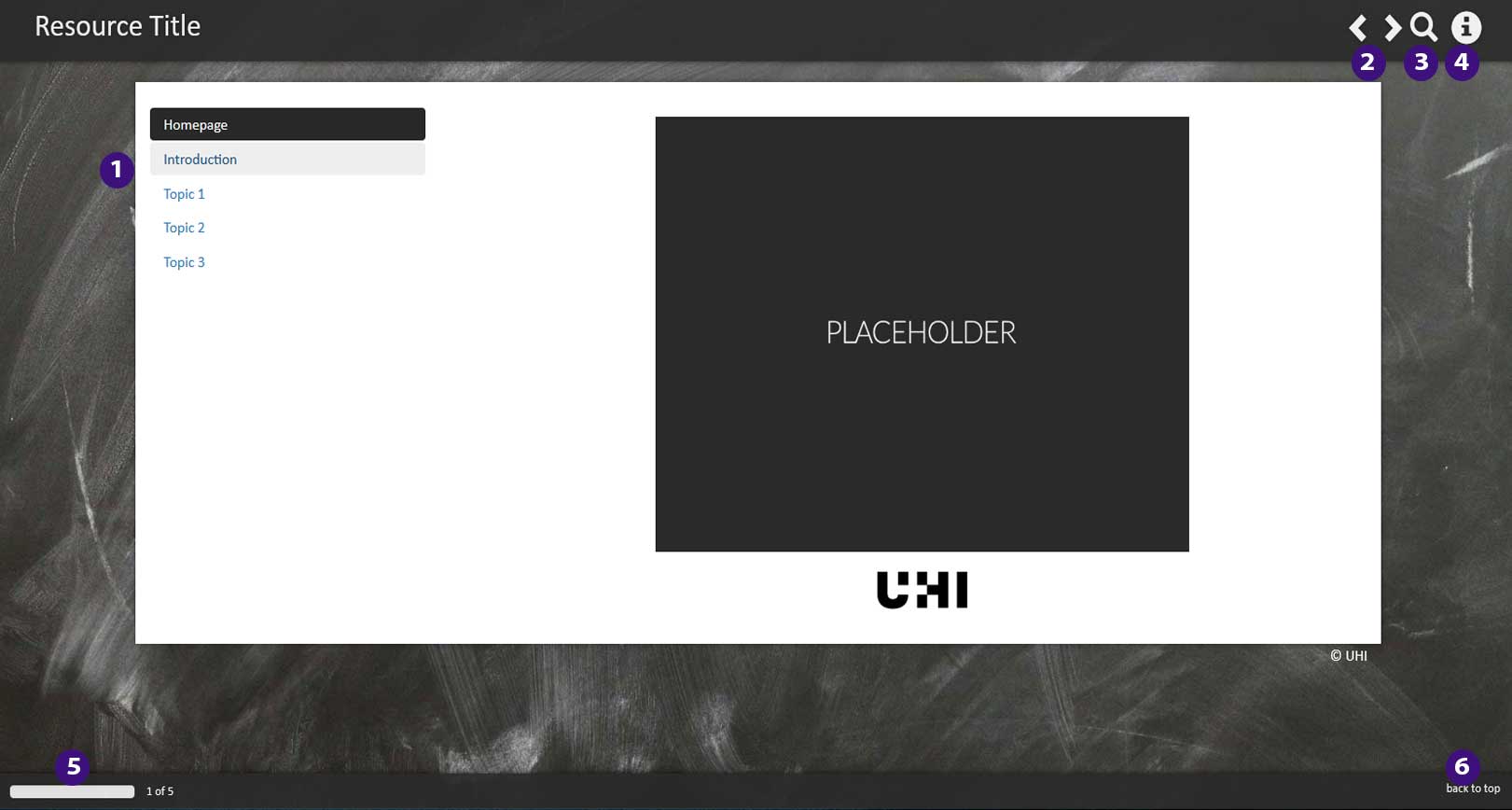Introduction
In this section we will look at the importance of taking notes, and examine some strategies for effective note taking.
Objectives
By the time you have completed this section of essential student skills you should be able to:
- Articulate the reasons for taking good notes
- Employ different note taking strategies

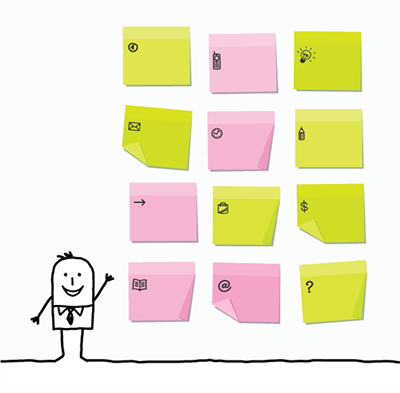
Why should I take notes?
Notes should be an active and creative part of the learning process. Note taking strategies will help you to engage with the materials rather than merely recording information.
Why should you take notes?
- They can summarise information
- They can clarify ideas
- They can help you remember (for some people the act of making notes helps them remember, they do not always have to go back to the notes again)
- They can be a record of what you have learned
- They can tell you where information comes from (very important)
- They can help keep you organised and focused
- They can help with exam revision and preparation for assessments

used under an Attribution 2.0 Generic license.
How to take notes
There are many different ways of taking notes. Some methods of note taking are more suited to particular learning styles.
Vary your technique
Different techniques can be useful for different situations. For example, you could use a mind map to record the main points of a lecture; make pencil notes in the margins of your course books to refer back to; make linear notes to plan essays; and make chart notes to take notes from a library book.
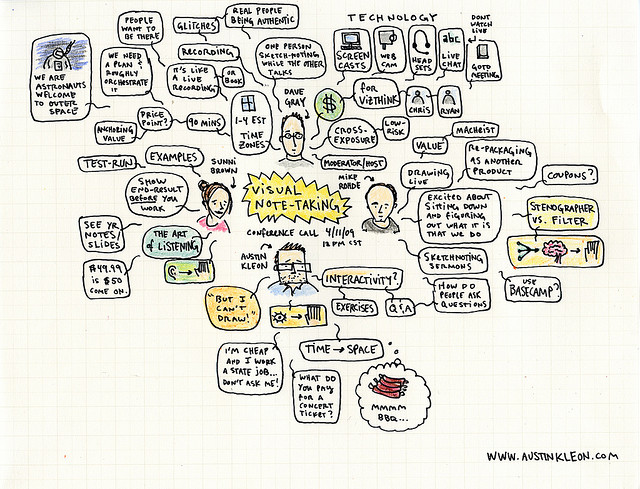
used under an Attribution-NonCommercial-NoDerivatives 2.0 Generic license.
Linear notes
Linear notes are created when you take down information line by line. This method of note taking is often preferred by students who have a read/write learning style. (You can find out more about learning styles in Thinking about learning)
- Write the title topic or question at the top of the page
- Divide your notes into headings representing each topic or subtopic. Number each section and subsection
- Leave a space between each section so that you can add more notes later; when you are revising, for example
- Leave a left-hand margin so you can put in notes and key words for each section
- Use colour to separate different parts of your notes e.g. write your own thoughts in one colour, quotes in another and facts in a third
- Link up related points by drawing coloured boxes round them, or link sentences with coloured arrows or dotted lines

Mind maps
Mind maps, also known as pattern notes represent the relations between ideas visually in a map or diagram. The main idea sits at the centre with other ideas branching off like the branches of a tree. Words and images are used to label the branches and subbranches. Mind maps are useful for remembering lots of pieces of related information; because your brain works by association, if you connect the branches, you will understand and remember a lot better. This method of note taking is often preferred by students who have a visual learning style. (You can find your learning style in Thinking about learning)
- Use a blank sheet of paper and draw a picture in the centre of the page that represents your main topic.
- Draw some thick, curved, connecting lines coming away from the central image.
- From each of these lines, draw other connecting lines, spreading out like the branches of a tree.
- Label each branch; use one key word per line - single words give your mind more flexibility and are better at sparking off new ideas than phrases.
- Add colours and images to your branches - colour is exciting for the brain.
- Represent connections between the different branches of your mind map using arrows or dotted lines.
- Mind maps can also be created electronically. An array of free mind mapping software exists for computers, tablets and smart phones.
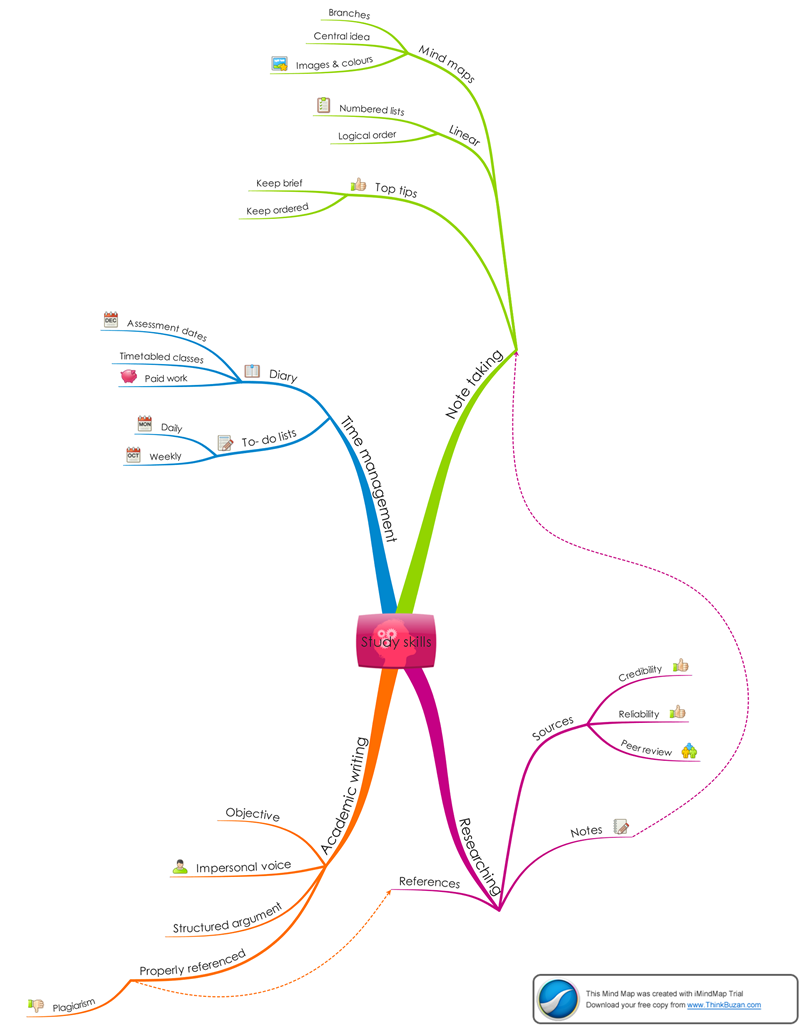
Free mind mapping software
Free mind mapping software is available from xmind.
Nuclear notes
Nuclear notes are a hybrid of pattern and linear notes (and mind maps). Topics are listed in boxes radiating out from a central theme. Colours and arrows can be used to highlight and connect different ideas.
How to make nuclear notes:
As the picture opposite suggests, nuclear notes begin by dividing a central topic into sub-topics; from there each point under a sub-topic is separated out by letters, number, or shapes. As concepts and points in different sub-topics may be related, in nuclear notes you use lines and arrows to connect ideas. Finally, consider using colours - again to keep things distinct but also as a way of showing connections that aren't immediately obvious.
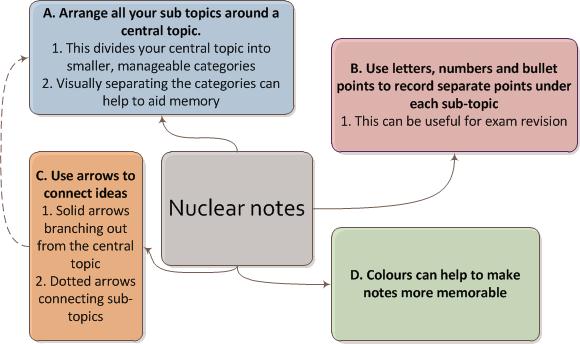
Diagram showing how to create nuclear notes
Chart notes
Chart notes use a chart or table structure to organise notes into thematic columns. Chart notes are useful in situations like lectures when you know in advance which topics will be covered. Chart notes are also easy to review and make a good revision tool.
Lecture on renewable energy
| Solar | Wind | Hydro | |
| Description |
Conversion of sunlight into electricity, usually using photovoltaic panels
|
Use of wind turbines or windmills to make electrical power
|
Production of electrical power through the use of the gravitational force of falling or flowing water
|
| Positives | Low efficiency Unreliable (because of reliance on weather) |
High efficiency Low running cost |
Very high efficiency Reliable |
| Negatives | Low efficiency Unreliable (because of reliance on weather) |
High installation cost Unattractive Risk to wildlife |
Can be quite specific in their focus
|
| Applications |
Domestic and commercial/ industrial
|
Domestic and commercial/ industrial
|
Commercial/industrial only
|
Chart notes example
Practising taking notes
Practising taking notes
Choose one of the note taking strategies outlined in this section and try it out on this piece of text. Click below for sample answers.
“(…) (F)eminism is divided into three broad phases. First Wave feminism, from about 1848 to 1918, focused on getting women rights in public spheres, especially the vote, education and entry to middle-class jobs such as medicine. The views of these feminists, at least as they expressed them in public, were puritan about sex, alcohol, dress and behaviour. The Second Wave, from 1918 to 1968, was concerned with social reform (such as free school meals for poor children, and health care for poor women) and ‘revolution’ in the private sphere: the right to contraception, the end of the sexual double standard and so on. Third Wave feminism from 1968 to the present has been concerned with public issues again (equal pay, an end to sex discrimination in employment, pensions, mortgages etc.) and with making formerly private issues (such as rape and domestic violence) matters of public concern and reform.” (Delamont 2003: 2)
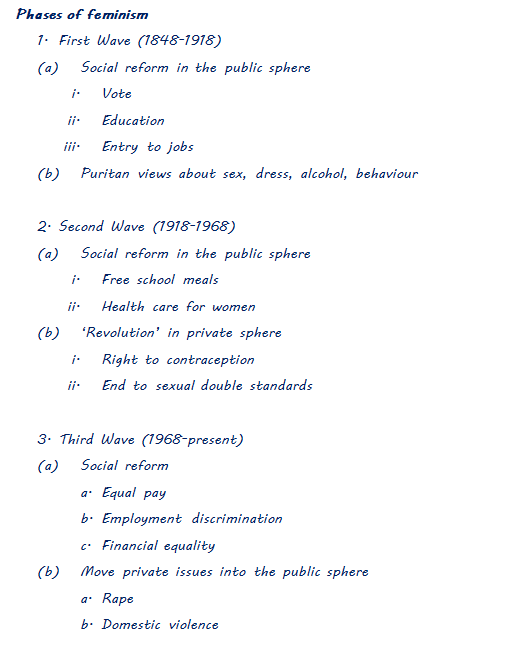

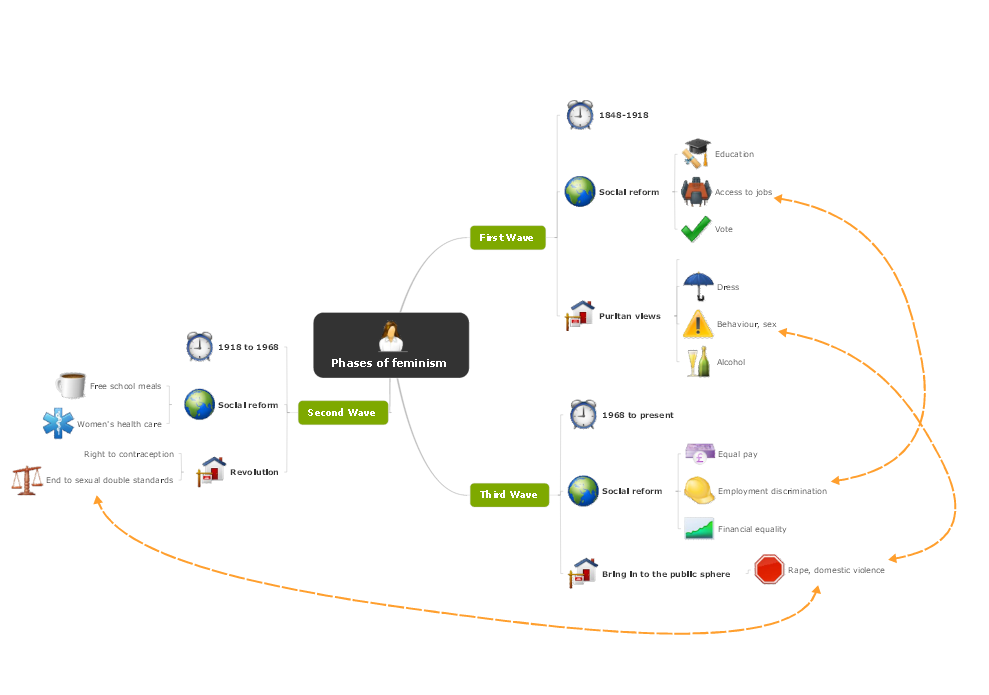
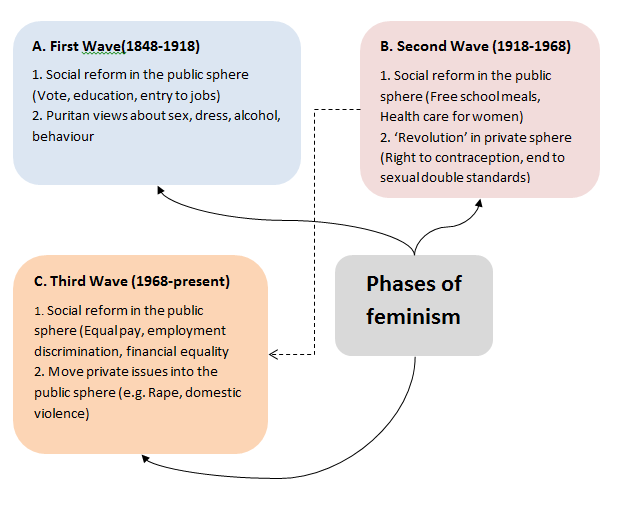
Taking good notes
Good notes are...
...at least 4 of the following things (see if you can think of some other qualities of good notes):
Organised
- Organise notes under headings, numbers or keywords.
- Colour code your notes by, for example, writing quotes in one colour, your own thoughts in another and key words or phrases in a third.
- Leave space in the margin to add more notes later, such as when you are revising or preparing for an assignment.
Brief
- Avoid copying long sentences.
- Use abbreviations and write in phrases rather than full sentences.
- Focus on writing down only key points.
Memorable and personal
- Write things in your own words as this make it more likely that you’ll remember and understand what you’ve written.
- Link up related points by using arrows and lines, numbering them or putting them in boxes.
- Use colour and illustrations to bring your notes to life.
- Find a note taking method that works for you, or adapt one, or make up your own.
Used as the basis for further study
- Revisit your notes as soon as you can so that you don’t forget things.
- Take some time to reflect upon them, order them, identify any gaps in your understanding and any questions or reading you need to follow up.
- Enhance your notes by using colour-coding to link pieces of information, highlighting or underlining key ideas and drawing round sections of your notes to make them stand out.
Conclusion
This section has highlighted the importance of note taking, and introduced you to the main note taking strategies. Good note taking skills are a valuable asset; they can make you a more effective student and save you time in the long run. It is worth trying to develop these skills straight away. Even if you are supplied with handouts in the early stages of your course, do take the time to write your own notes and you will find that your knowledge and understanding develops more quickly.
References
Delamont, S. (2003) Feminist Sociology. London: SAGE Publications






